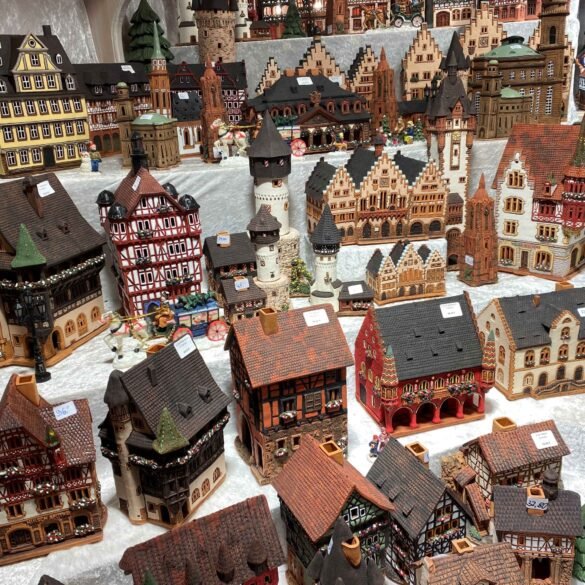We arrived in Muscat early in the morning, having spent the last two nights in an airplane, the first flying from Chicago to Frankfurt, and 14 hours later, from Frankfurt to Muscat. Unsurprisingly, we were exhausted. We checked into the hotel, ate breakfast, and collapsed into bed. Four hours later, somewhat refreshed and rested, we were ready to start exploring Oman.
Victor is a fervent believer that the best place to start exploring any country is from inside a museum. And I was absolutely on board. After all, a lot of museums have these nice soft benches to take a quick nap on, in case jet lag fatigue sets in. In fact, just a day ago, I fell asleep in the Art Museum in Frankfurt, while Victor marveled at the paintings.
And so, excited for completely different reasons, we walked into the Bait Al Zubair Museum, a beautifully restored private residence, reflecting the best traditions of Omani architecture and showcasing the rich cultural heritage and history of the Sultanate of Oman. Inside, there were exhibits and collections, manuscripts and documents, as well as extensive photographic archives. But most importantly, in the best of Omani traditions, there was a room decorated for entertaining guests with ornate carpets and cushions on the floor.
Satisfied that my future nap needs were going to be easily taken care of, I began to explore the museum.
One of the first exhibits was of traditional Omani dress, which we would see everywhere during the next two weeks as we drove around the country. While in most countries, traditional clothes are saved for holidays and festivals or simply left in the past, Omanis still wear the same garments their great-grandparents did in their daily lives and with pride. The men are usually dressed in a carefully tailored long white robe called dishdasha, with a rounded kuma cap and sandals. The majority of women wear colorful dresses covered by long black robes called abaya and have their hair covered by matching scarves. But the main attraction is not the clothes but the accessories.
The Omani walking cane, also known as Arz, is a functional accessory that we later saw many older Omani men using. Arz are usually made from wood with metal accents, such as brass or silver, and are decorated with calligraphy or traditional patterns. Far less common in the streets were the khanjars, distinctive Omani daggers with a curved double-edged blade and an ornate hilt. This dagger can be found on the Omani flag and is traditionally worn during formal occasions, ceremonies, and celebrations.
I spent most time mesmerized by the glitter and intricate designs of the women’s jewelry exhibit. I am not usually interested in ornamental trinkets, but this was something special. The large dangling earrings, elaborate necklaces with pendant designs, flowery bangles and bracelets from silver and gold, unique rings with detailed designs meant to be worn on a specific finger, waist belts, nose rings, and incredibly heavy-looking anklets, everything looked ancient and stunning.
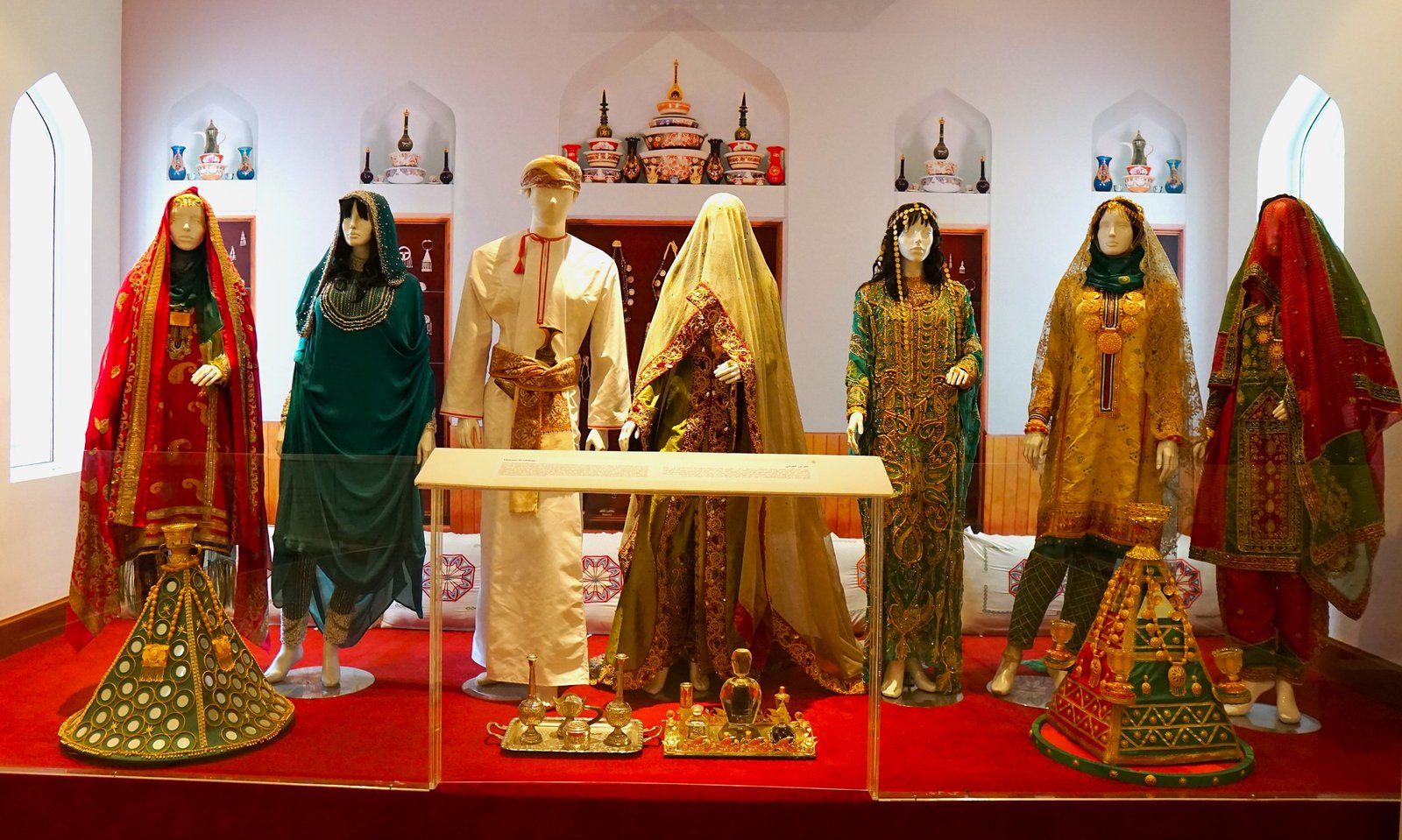

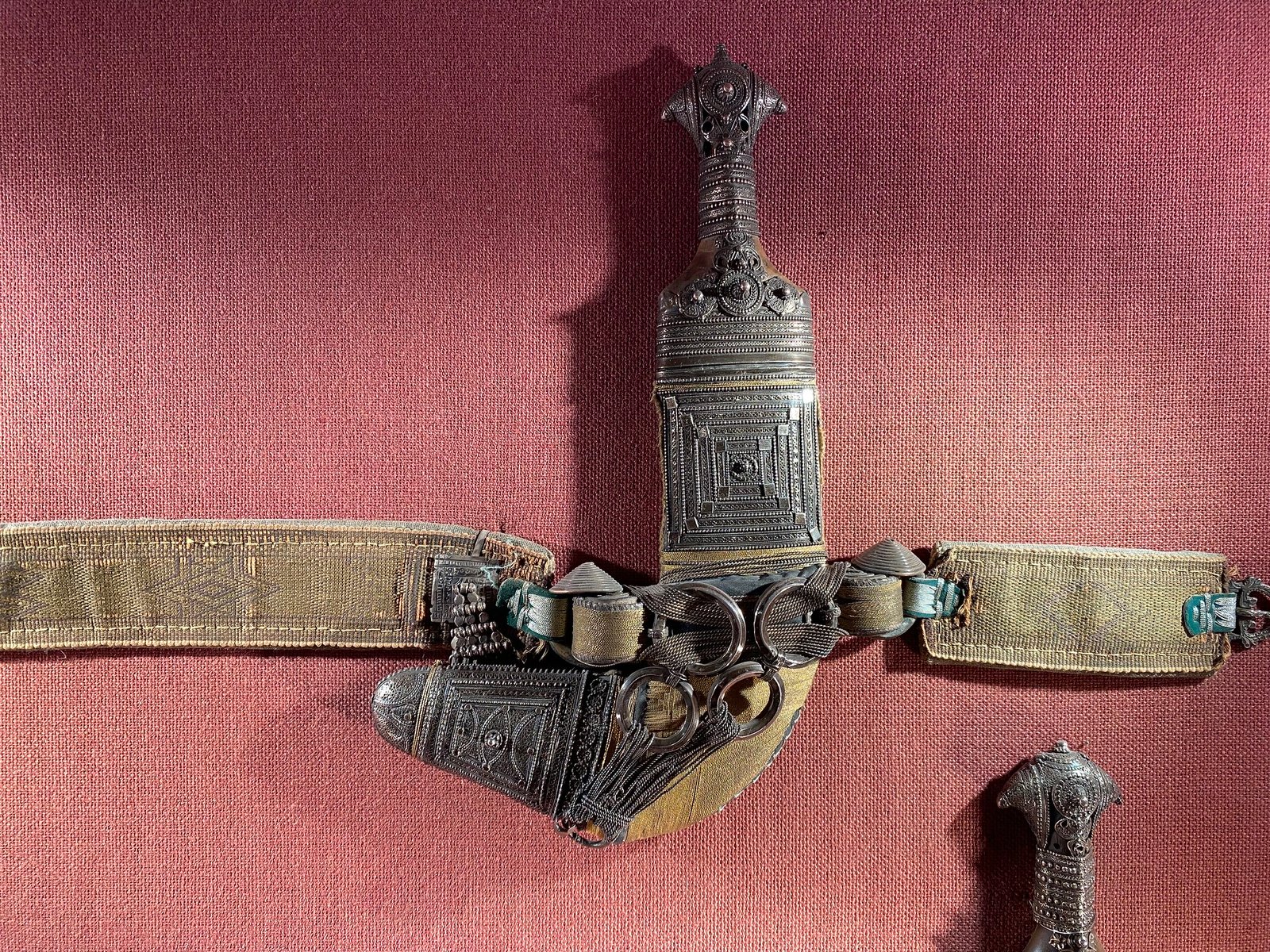
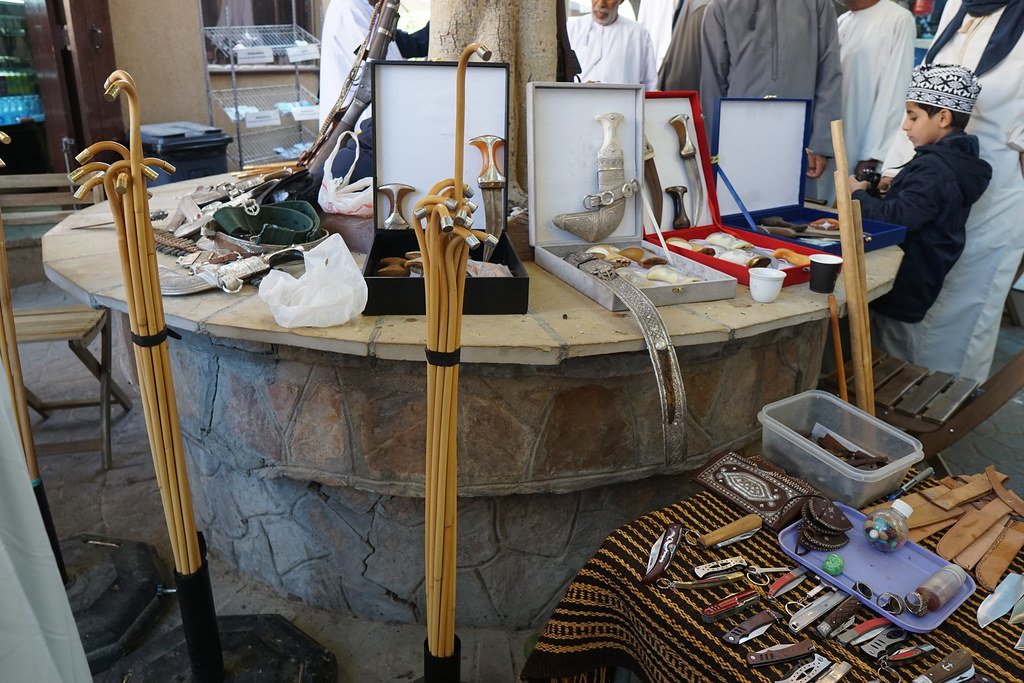
The next exhibit was about the deep-rooted cultural and historical significance of frankincense in Oman. Just to backtrack a bit, that very morning, when we landed in Muscat Airport, I was surprised to find the usually sterile airport air to be slightly smoky and uniquely aromatic.
“They are burning frankincense!” Victor told me excitedly, and I pretended to know what he was talking about. Now was my chance to find out what exactly was going on.
I learned that frankincense is an aromatic resin harvested from Boswellia sacra trees and that Oman is one of the few countries where these trees grow and thrive. Besides being used as an air freshener in Omani households, stores, and airports, frankincense is also used in religious ceremonies and traditional medicinal practices.
Historically, the trade of frankincense played a vital role in Oman's economy, and the country's ports served as important hubs for the export of frankincense to various parts of the world. That very evening, when we visited Muttrah Souq (a large outdoor bazaar), we saw endless shops selling frankincense in various forms, including resin, essential oils, and incense. The air was thick with the now familiar scent wafting through the air.
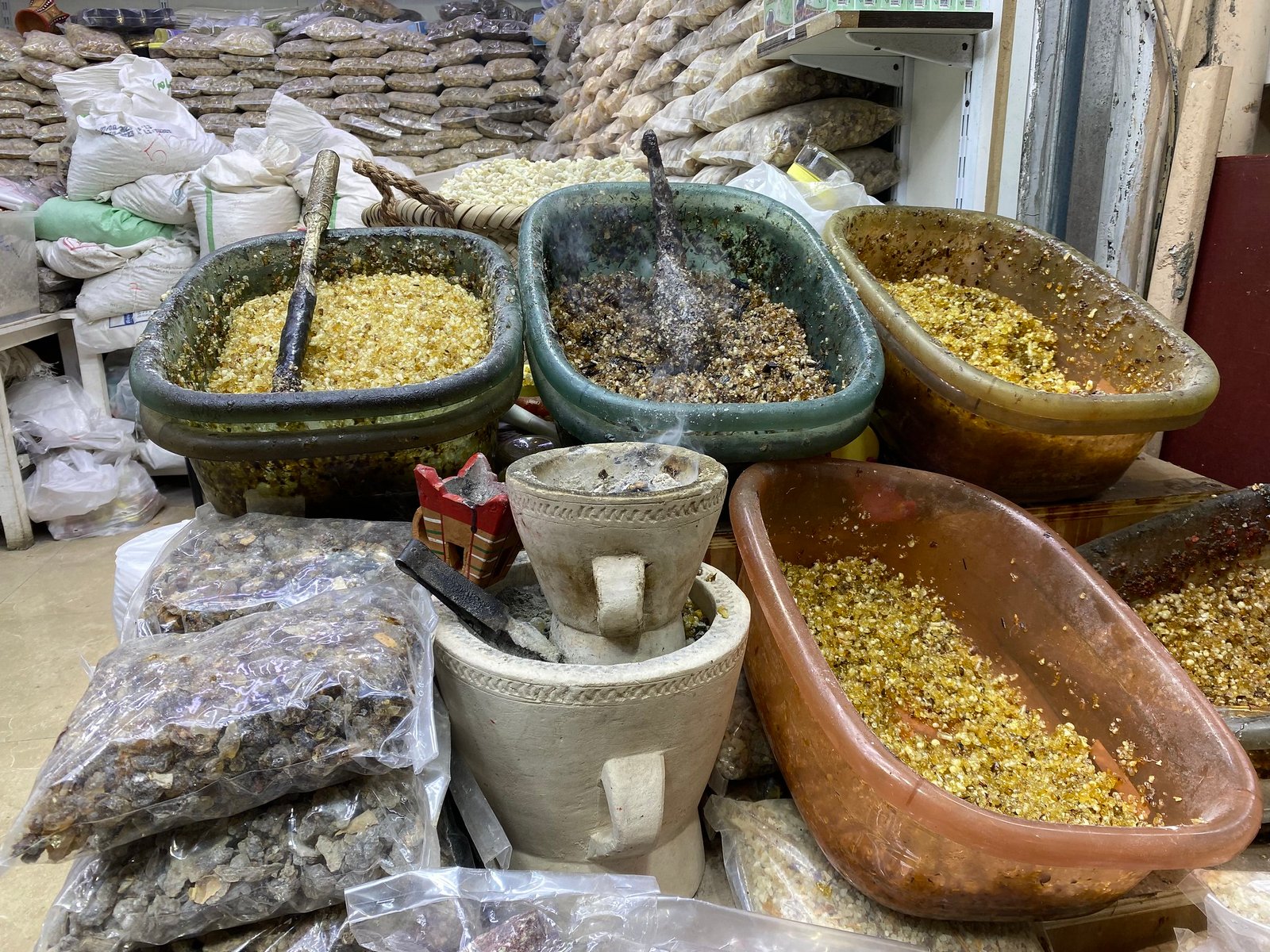
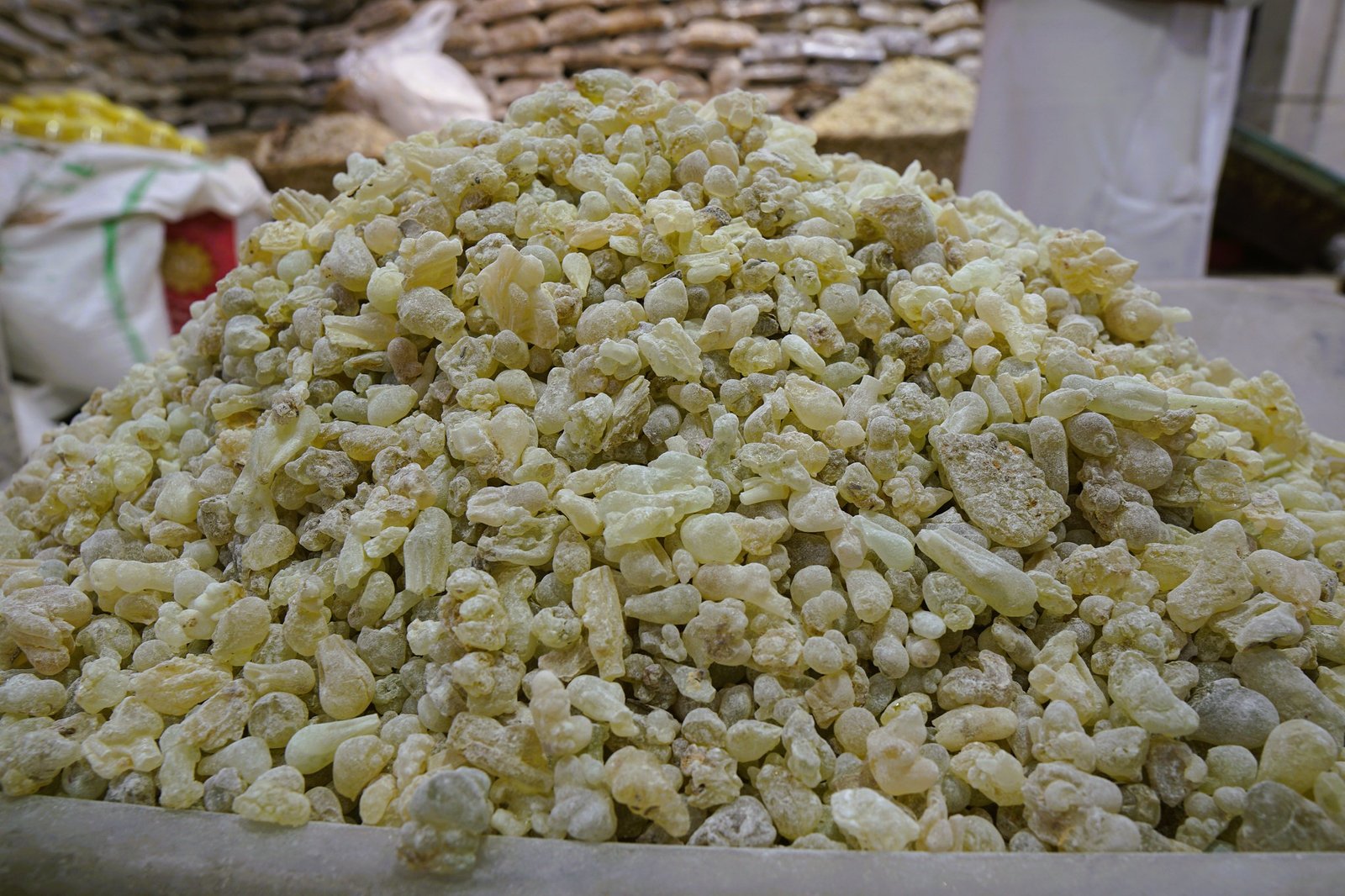
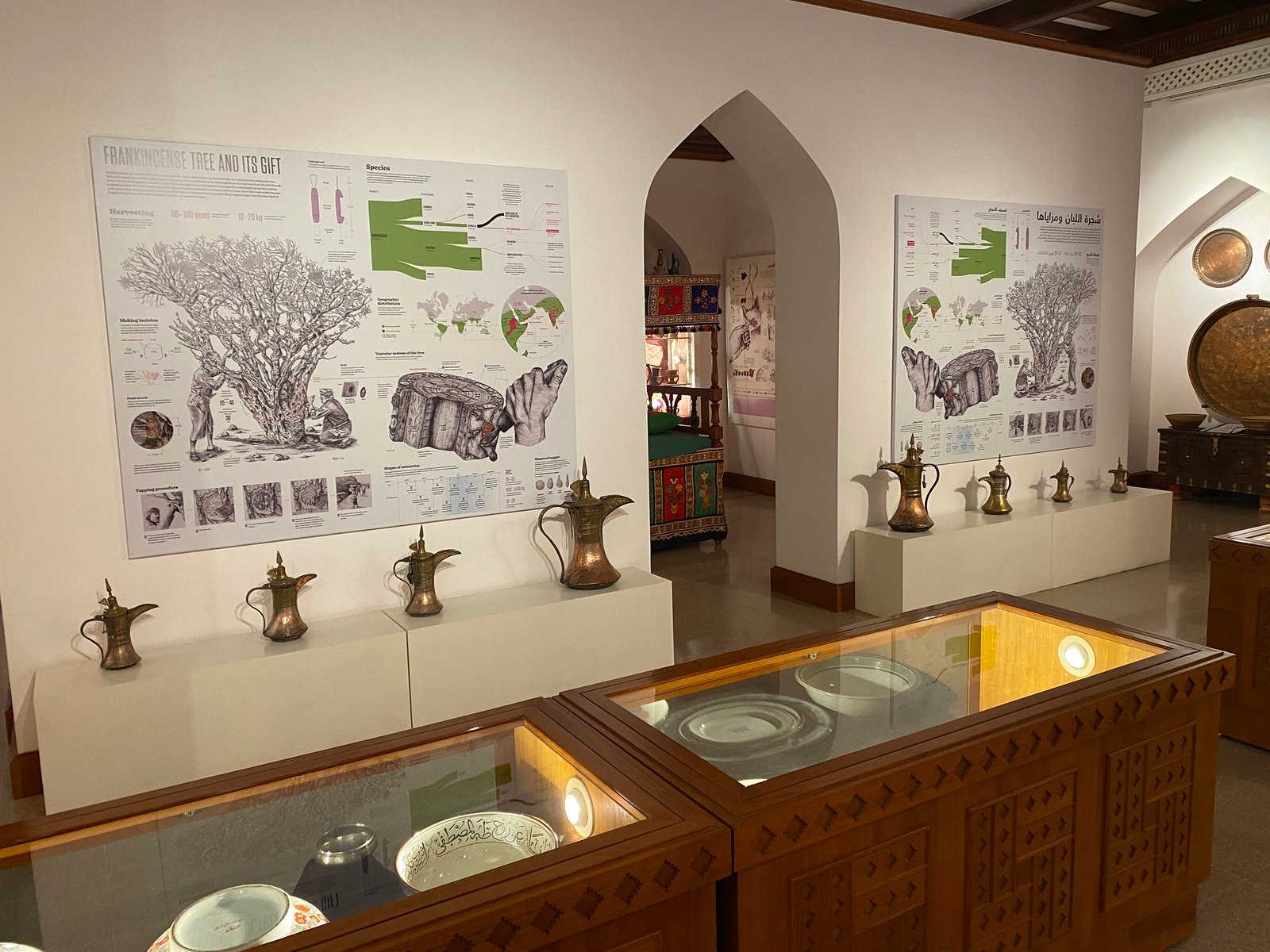
While I was reading the information on frankincense, Victor came up and pointed down, “I want to buy one of these as a souvenir at a market. Aren’t they beautiful?”
On a shelf underneath was a display of Omani coffee pots, known as “dallah”, the iconic symbols of Omani culture and hospitality. Each pot had a distinctive shape with a long, slender spout, an ornate top, a curved handle, and a bell-shaped body. Made of brass or copper and covered in intricate engravings and decorative patterns, these pots really were magnificent.
As we traveled through Oman, we had coffee or “kahwa” served to us in both shiny new modern versions of dallah pots and the antique copper pots, weathered by years of use. We saw them on display in every museum and every coffee shop and spent many evenings walking around small shops in local souqs, searching for the perfect dallah pot to take home. Finally, in Nizwa, Victor found an antique copper pot decorated with etched flowers, worn from years of pouring coffee, and perfect in all its imperfections. After much bargaining, we finally walked away with our own piece of Omani heritage, an item representing hospitality and traditions passed down through generations. We haven’t had a chance to brew any coffee in it yet, but it looks beautiful on the shelves of our “Museum of Travel”.


I got so caught up with all of the fascinating displays in Bait Al Zubair Museum, I completely forgot my exhaustion and jet lag and that nap I had pre-planned to take on the floor cushions. This museum was a great way to kick off our trip and a nice preview of everything we were going to experience while traveling the country – the conservatism and modesty of Omani people as represented by their clothes, the artistry as seen in the traditional jewelry, the spirituality in the aroma of frankincense, and the warmth of Oman hospitality found in a hot cup of coffee.
More Oman stories coming up!
